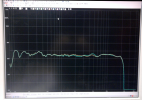I just started here a bit ago. I wanted to build a set of speakers as a neat little project to work on. I figured I don't have all the answers, and in some cases, don't even know the right questions to ask. I joined ASR because on other forums I noticed that a lot of analysis was more anecdotal instead of based on evidence. I have learned so much in the past 5 months. Everything from filter design, to analog vs digital, and even some enclosure design (I also didn't know what SINAD was before I joined). However, my biggest gripe has always been the condescension. Look... I will be the first to raise my hand and say "no, I don't know everything." I picked this hobby up because I love audio and thought maybe with a little education I would be able to make some of the things that sound really good instead of wringing my wallet out for them. But time and time again, I run into the same old situation. People who do know better and, instead of providing mentorship and learning, only provide further consternation and frustration. This isn't easy. Like... at all. It's hard. There is so much that goes into designing even just a set of studio monitors. I had no idea that there was this much depth. It doesn't help at all when I ask a question to tell me "I'm out of my depth" or "how do you not know this" or something else along those lines. It only makes it tougher, and even worse, makes the hobby far less attractive than when I first started. I don't know how. Fine. Doesn't give you free reign to berate me and tell me I don't know what I'm doing because I'm new.
I came across this thread just yesterday.
@BKr0n: In case you are still involved in some kind of DIY-speaker project, I'd recommend the software
LspCAD.
The software allows to build passive and active speakers with the filters being passive, generic, OpAmp based. The individual chassis are connected to individual amplifier channels and the software calculates level and phase that would be present on the chassis terminals with the crossover in place (be it active or passive (!)).
The inputs needed to design the filters are:
- impedance vs. frequency of the individual chassis measured in the final cabinett (incl. damping material and port)
- frequency response incl. phase (on axis) of the individual chassis in an anechoic environment (merging of near-field responses with windowed far field response is a valid way to go)
- I don't even think LspCAD needs the TS parameters of the chassis, but I'm not sure since we had them measured anyways to dimension volume and port
When back then in summer 2013 our acoustic designer left the company, he gave us (mainly electronic designers) a crash-course on his last evening. Together we developed the passive crossover for a 2-way loudspeaker (a private project of one of my colleagues) and after about 5 hours the result was pretty nice (see attachment, vertical grid should be 5dB/Div with the numbers being 10dB apart; the room was treated, but far from being anechoic)).
Listening to a pair of these speakers (in emulation mode) was perfectly enjoyable

- even for people developing professional speakers.
The actual passive crossover was made months later and the result matched the frequency response measured in emulation mode within ca. 1dB.
There was (and I hope there still is) a commercial version and a free version. The restriction of the free version was that you cannot save projects and there's no emulation mode.
I do have a pair of 2-way speakers with a flawed crossover design (baffle step not accounted for; different phase response of the two chassis in the crossover region), but I stick with them because my dad did the woodwork for the beautiful cabinets. I do have a calibrated microphone, REW would perfectly do the job (we used CLIO back then), I still have a copy of LspCAD and last-not-least I have a former colleague and friend who clearly is a luminary in all audio and audio measurement related things. He's the one who got me involved in the ASR.
I have not yet taken the trouble to develop a new crossover for this pair of speakers - that would be an extensive project, including initial (anechoic) measurements in the garden.



